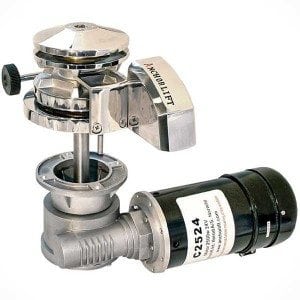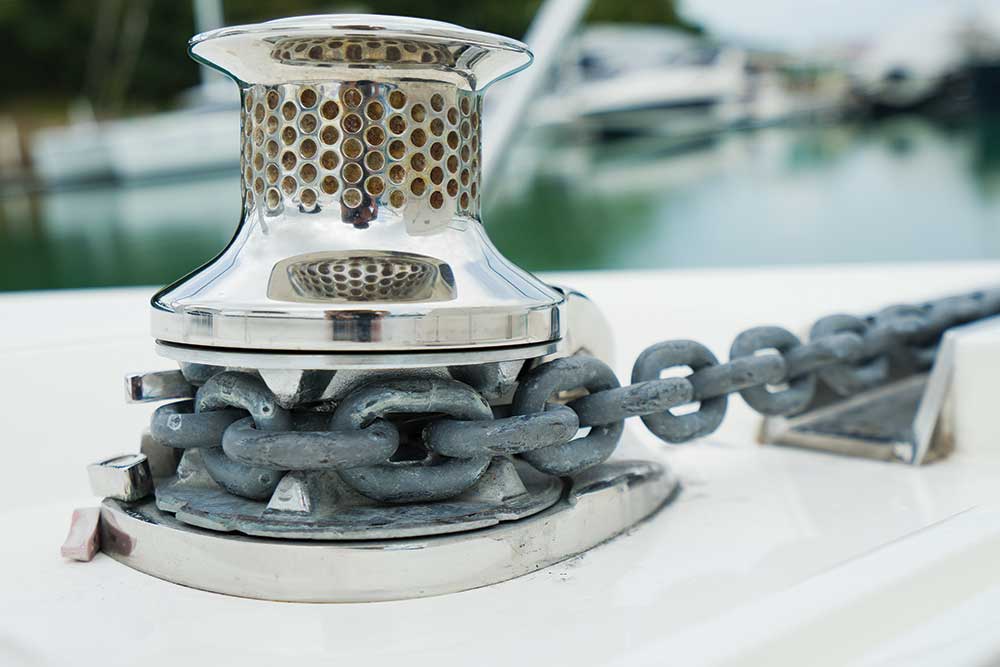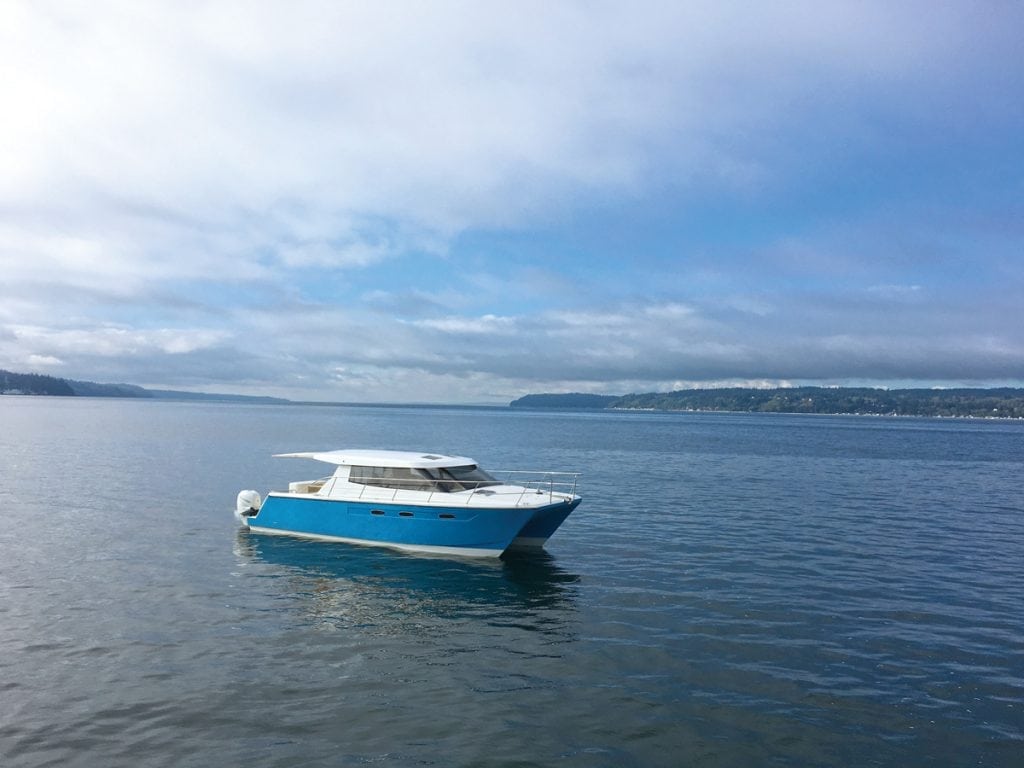Heavy-duty lifting is this marine powerhouse’s job.
Dropping anchor in a beautiful cove is often the goal of cruisers, who seek and set sail for stunning destinations only accessed by water. To aid anchor deployment and retrieval, most cruising vessels are equipped with a windlass, and power options include manual, electric or hydraulic. Installing a windlass can aid a cruiser for years to come.
The electrically powered windlass is the type most often used on cruisers. Vertical windlass designs have the electric motor and rope/chain gypsy (the chain wheel that the chain and rope roll up on) installed in a compartment just below deck on the bow, while horizontal designs have the entire lifting assembly mounted on the bow and covered for protection. An electric windlass allows the anchor line to pay out at a controlled speed as you deploy your anchor. When you’re ready to haul the anchor up, you hit the switch and the electric motor hauls in your chain and anchor.
Windlass technology does not change quickly, yet there have been advancements in metallurgic compounds and motor and gearbox designs. For example, Anchorlift uses AISI 316L-grade solid stainless steel for the production of all of its models and accessories. John Lynch, Anchorlift general manager, explains why. “The reason is durability and stability of the material. AISI 316L stainless steel is the best available, and we don’t use nylon, aluminum or plastic because we feel these reduce performance and compromise the durability of the windlass.”

Other leading windlass manufacturers include Lewmar, Maxwell Marine and Quick Nautical Equipment. Windlass selection is based on three criteria: vessel size, vessel weight and anchor size. “These all go into the science of selecting the appropriate windlass for the boat, because it’s not just the windlass that is needed,” Lynch explains. “You need to have the correct bow roller for the style anchor that is used, and the anchor design affects this as well as the position of the windlass, whether it is deck-mounted or thru-hull.”
Boat owners also need to utilize the correct rode kit, which is determined by the gypsy size in the windlass, how deep you normally anchor, the size of the anchor locker, and your scope ratio (the distance of rode compared with the depth you are in). In addition, whether the boat has a 12v or 24v power system is also a factor.
Lynch says their website was designed to take out the guesswork for customers. “We have an extensive amount of information, photos, drawings, diagrams, comparisons, and specifications available to view and download in order to help make the selection process very easy. Plus we have staff that is always available to answer calls regarding windlass and windlass accessories.”
Maintaining the windlass involves rinsing the windlass with fresh water after a day of use and polishing periodically to keep its shiny luster – especially stainless steel. Boat owners should ensure the unit is properly greased and that no corrosion starts to form on the surfaces of the unit. This includes the motor and gearbox of a vertical windlass that are located below deck, usually in the anchor locker.
“We recommend using an anti-corrosion spray (paraffin based) and spray the entire motor and gearbox thoroughly,” Lynch adds. “Boat owners should periodically check to see if any white powdery material (corrosion) is present. If so, remove it with a wire brush and apply more anti-corrosion spray. The anchor locker is a harsh environment and gets very wet when the rode (anchor rope and chain) whips around in there when the windlass is in use. This creates a very unfriendly environment for materials that can corrode.”
Regardless of the manufacturer and model installed, user error can still happen on the water. For example, a windlass should never be used to haul the seabed to the boat, or drag the boat to the anchor. This can cause damage to the windlass such as a bent shaft or damage to the vessel itself.
“The only way to avoid any mistakes is to follow the manufacturer’s recommended use of the product,” Lynch says. “If you have never used a windlass before, there are blogs, websites and, of course, your local marina staff that will help you decide which is right for you and how to properly use it. We also strongly suggest professional installation of the windlass and its accessories. Although they look easy to install, it can become quite involved and frustrating once you get into it.”
Anchorlift’s Anchor Turner Kit also helps boat owners avoid problems with twisting anchors when they’re retracted. It includes an anchor connector swivel and anchor turner, which helps the anchor park correctly in the bow roller rather than upside down.
INFORMATION:
anchorlift.com
— By Doug Thompson, Southern Boating Magazine November 2016













